New Employee Surveillance Schemes are Taking Micromanagement to the Next Level
More and more companies are leveraging digital technologies to keep extra tabs on their employees, both in the office and at home.
This guest post comes to us from Argentus Supply Chain Recruiting, a boutique recruitment firm specializing in Supply Chain Management and Procurement.
As part of our efforts to chronicle the ways the workplace is changing, we recently wrote about how more companies are adopting formal work from home policies. More organizations realizing that these policies – and other alternative working arrangements – can help them attract and retain top talent in a thriving job market. Working arrangements are becoming more flexible, but today we wanted to write about another countervailing trend.
The rise of digital communications (and applications like Skype, Google Docs, and Slack) has enabled work from home policies that let workers collaborate in real time across big geographic distances. Now, an article in the Guardian by Olivia Solon details how more companies are leveraging other digital technologies to keep extra tabs on their employees, both those who work in the office and those who telecommute.
Companies have long monitored their employees’ email, and blocked certain websites from company networks (as well as, of course, monitoring their physical presence in the office). But Solon writes about how more and more high-tech pieces of software are encouraging companies to monitor their employees’ screens, keystrokes, social media posts, private messaging, and even face-to-face interactions. As Solon puts it, “today’s workplace surveillance software is a digital panopticon” that makes employees assume they’re being watched so that they’ll stay on task and avoid any kind of distractions.
(For those who don’t know the reference, the Panopticon was an architectural design for a prison made by philosopher Jeremy Bentham in the 18th century in which a central guard tower, shadowed under darkness, kept watch over a circle of inmates who weren’t able to see at any given moment whether they were being observed.)
These technologies include Crossover’s WorkSmart, which bills itself as a “Fitbit for how you work” and offers managers a numerical score after measuring employees’ keystrokes. It also uses remote employees’ webcams to take photos of them every ten minutes and make sure they stay on task. Another technology named “Wiretap” – charmingly enough, for employees who don’t see themselves as criminals – measures the number of emails an employee sends, the number of times they open documents, the programs they use, and their keystrokes, alerting supervisors about any deviations from their normal numbers. Teramind, another employee surveillance solution, measures the amount of switching between applications that employees are doing, supposing that a high amount of switching signals a distracted employee who needs to be reprimanded. Another service, Qumram, monitors employees’ personal devices, including messaging apps like WhatsApp, to make sure that they aren’t discussing anything untoward.
It’s a new level of penetration into employees’ activity and private lives, and it all raises some interesting privacy and employee management issues. On the ethics front, it kind of comes down to this: does the idea of your employer taking a picture of you through your webcam every ten minutes give you the creeps?
Everyone has different opinions about the privacy aspects of these technologies, and whether it’s good for employees’ mental health to have all their computer activity monitored. But we’re interested in discussing these technologies from an employee management perspective:
From our perspective, what’s dangerous about this isn’t necessarily the technology itself – and believe us, it’s truly disconcerting to see one of these app’s founders literally saying “big brother is watching you,” (seriously, read the article!). But from our perspective, the issue is really the larger ethos of extreme micromanagement that this technology serves.
It’s reasonable for companies to want to protect their data. It’s fair for them to want to keep an eye on what their employees are doing – they are the ones paying for the time, after all. But the idea that an aggressive focus on every keystroke is going to improve white-collar productivity? To us, that’s specious at best. From our perspective, companies thrive when they trust their employees. They succeed when they grant them the autonomy to go above their “assigned duties” to find new projects, new lines of business, and new efficiencies – not when they obsessively monitor them to ensure those duties are being carried out.
Micromanagement often leads to loss of trust, a dearth of creativity, burnout, and high employee turnover. Is all of that worth it for the opportunity to catch an employee “stealing” ten minutes of the day to check social media, or use the bathroom if they’re working from home?
In our opinion, it’s not.
It’s telling that a lot of these software solutions use language that treats employees like children or criminals. Solon quotes the CEO of Awareness Technologies, who says “if you are a parent and you have a teenage son or daughter coming home late and not doing their homework, you might wonder what they are doing. It’s the same as employees.” Is it? Employees are people that you’ve vested with your trust. They’re people you’ve specifically hired because of their skills and creativity. They’re the critical success factor to your organization. So why should the assumption be that they’re up to no good? Isn’t it better to hire with trust in mind, and measure results to see if each employee deserves that trust?
The evidence is pretty clear that companies innovate when they treat employees like adults. Is it a coincidence that some of the most innovative companies in the world, including Google, Uber and 3M offer employees enough freedom at the office to work on non-assigned projects, and even nap?
There are legitimate reasons for this kind of surveillance: in parts of the financial industry, these solutions can prevent insider trading. They can also help monitor sexual harassment and inappropriate behavior. When you’re talking about management style, a certain amount of micromanagement is inevitable, even warranted. But in our opinion, these kinds of total digital employee surveillance schemes will most likely result in an atmosphere of fear and distrust in the workplace, which is the opposite of a productive environment.
But what are your thoughts? Do these heightened employee surveillance systems encourage excessive micromanagement, or do you think they stand to make workers more productive? We’re open to all perspectives and experiences. Let us know what you think in the comments!
Related posts:
- How to Be a Bad Leader: 6 Common Charateristics of Poor Leadership
- The Economic Case for the Remote Workplace and Flexible Scheduling
- Why Allowing Your Employee’s To Work From Home Can Make You Both Happy




